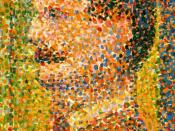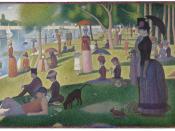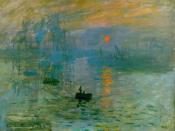Impressionism
In the 19th-century we saw an art movement that would come to be known as Impressionism. The Impressionism term was coined in 1874 after a hostile critic, Louis Leroy, had seen a picture entitled Impression: Sunrise by Claude Monet (Janson 721) and gave the art work a sarcastic review. Impressionism came into prominence between the 1870 and the 1880 (Janson 721). As with each new art movement, they are a response to the previous period and Impressionism is no different. It was a reaction to the realism and the classical matter defined by academies, Impressionism set out to break these boundaries. Before this time period, one of the greatest boundaries was the "perfect image," an image that was carefully finished and looked as realistic as it could be. Many of these paintings were of historical subjects and other religious or mythological themes. The Impressionism movement brought out the emotion of the painter, and allowed the painters to set their own rules.
There began a shift of painting landscapes and paintings that made the world stand still as they saw it in their own eyes. Artist brought in more dazzling colors and allowed these colors to mix. As painting before this period, each layer would be added and then allowed to dry; during Impressionism, these colors mixed and became piled up upon one another. Painters of this movement felt as if they were casual strollers, who take in a slice of life as it passes by (Janson 722). During this time, paintings were not only focused on the person but on what he or she was doing at the time.
Take Edouard Manet's painting A Bar at the Folies-Bergere (1881-82); it depicts a scene in the Folies Bergere nightclub in Paris. The painting is painted just as if you were...


